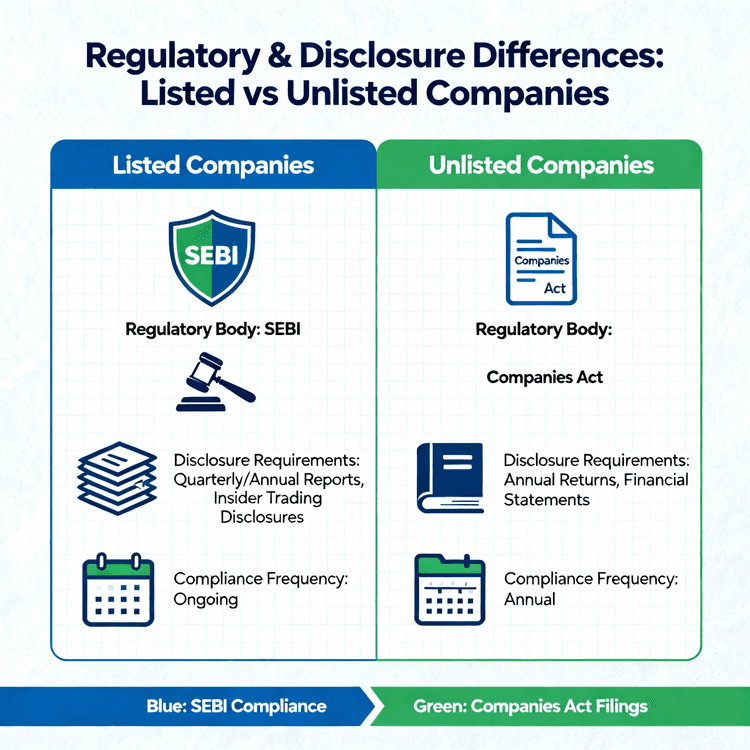The National Stock Exchange of India (NSE) is the backbone of India’s stock market, facilitating capital formation and empowering individuals to grow wealth. This article delves into NSE India's financial and operational strengths. NSE Unlisted Shares have drawn investors towards the pre-IPO as the buzz around the issue continues.
Established in 1992 and operational since 1994, the NSE revolutionized stock trading in India. It addressed the issues of transparency, efficiency, and accessibility that plagued the pre-NSE era. Its electronic trading system allowed fair pricing, efficient order execution, and brought the stock market to a broader audience.
How the NSE Operates
The NSE operates on a foundation of technological innovation and regulatory oversight. Its automated systems and streamlined processes ensure efficient and transparent trading.
- Order Matching System: At the heart of the NSE's operations lies its automated order matching system. The order matching system ensures transactions are executed at fair prices, reflecting real-time supply and demand. By eliminating intermediaries and manual processes, the NSE provides a level playing field for investors, regardless of their size or location.
- Clearing and Settlement: Following the execution of a trade, the NSE ensures that the transaction is settled smoothly and securely. The National Securities Clearing Corporation Limited (NSCCL), a subsidiary of the NSE, plays a vital role in this process. By guaranteeing the settlement of all trades executed on the NSE, the NSCCL eliminates the risk of counterparty default. The adoption of a T+1 (Trade plus one day) settlement cycle further reduces risk and enhances market liquidity.
NSE serves a broad range of investment preferences. It provides a wide spectrum of investment opportunities through its diverse market segments:
- Equity Market: This is where shares of publicly listed companies are bought and sold. Shares represent ownership in the company. If the company does well, the share value increases, and if the company faces challenges, the value may decrease.
- Derivatives Market: This market involves contracts based on the future price of assets like stocks, indices, or commodities. Derivatives help manage risks from price changes or enable profit from predicted price movements.
- Debt Market: In this market, instead of selling ownership (like shares), companies and governments raise money by issuing bonds. Purchasing bonds means lending money to the issuer, who promises to pay it back with interest over time.
- Currency & Commodity Market: This market trades currencies (dollars, euros, etc.) and raw materials (gold, oil, wheat). Businesses use this market to secure prices and protect against sudden price changes that could impact profitability.
- Mutual Funds & ETFs: This market involves baskets of various investments (stocks, bonds, or commodities) managed by experts. Selecting a ready-made mix helps reduce risk by diversifying across different assets.
NSE’s multiple revenue streams reflect its position as the foremost exchange and a key player in the Indian financial landscape.
➢ Trading Services (80.54% of Revenue): Charging small fees for trading financial products makes up the largest revenue for NSE.
➢ Colocation Charges (5.91% of Revenue): Trading firms colocate their computers inside the NSE building. As they pay a premium for this speed advantage, it leads to this revenue stream for the exchange.
➢ Exchange Listing (1.49% of Revenue): Companies listing their shares on the NSE pay fees, contributing to this source of income for the exchange.
➢ Other Services (12.06% of Revenue): The sale of market data, trade clearing, and licensing also generate revenue for the NSE.
What Powers the NSE's Growth?
NSE’s growth can be attributed to multiple factors, including tech leadership, regulatory structure, retail participation, and economic progress.
➢ Infrastructural Advantage: NSE boasts high-speed trading platforms and facilitates algorithmic trading, enhancing market liquidity and efficiency.
- High-Speed Trading Platforms: NSE's high-speed trading platforms are at the core of its operational efficiency. These systems execute transactions in milliseconds, giving both institutional and retail investors a fair and rapid trading experience.
- Algorithmic Trading: NSE’s algorithmic trading by institutional investors allows execution of large orders quickly, improving liquidity and market efficiency.
- SEBI Oversight: SEBI oversees the NSE according to strict rules and regulations to prevent market manipulation and maintain fairness, which builds investor confidence.
- Investor Protection Fund (IPF): The NSE's Investor Protection Fund (IPF) compensates investors for their losses in case of a broker default, thereby protecting their financial interests.
- Digital Investment Platforms: Mobile apps and online trading platforms are easy to use and have made stock trading more accessible to retail investors.
- Education and Awareness: Financial literacy and awareness are increasing through social media, blogs, and educational campaigns. This has led to more confidence in the market for the investors.
- Better Returns Compared to Traditional Savings: Higher potential returns have attracted more investors to the stock market compared to traditional saving instruments.
- Rising GDP and Corporate Earnings: India’s rapidly growing economy leads to higher corporate earnings, which in turn attract more investment in the stock market.
- Government Incentives and Reforms: Government policies have boosted the stock market by promoting digital banking, encouraging startup IPOs, and attracting foreign investment.
- Expanding Middle-Class Wealth: The expanding middle class, with increasing disposable income, is investing in stocks and mutual funds, contributing to the NSE’s growth.
Several factors present a challenge to the Indian capital markets and the NSE:
- Geopolitical Instability and Global Trade Disruptions: Geopolitical instability and protectionist policies can disrupt global supply chains, negatively affecting Indian companies and investor sentiment.
- Structural Bottlenecks in Financial Infrastructure: Gaps in market infrastructure and scalability challenges can limit the market's potential.
- Dependence on Derivatives Market for Revenue: The NSE generates the majority of its revenue from the derivatives market, which is volatile.
- Challenges in Expanding Retail Participation in Complex Asset Classes: There are slower adoption rates for complex products, because many retail investors still lack confidence in the complex assets.
NSE has year-on-year growth with the operating margin standing at 71%. The exchange has showcased strong revenue streams.
➢ Profitability and Turnover: The NSE has demonstrated strong financial performance, with a 28% year-on-year revenue growth, reaching ₹16,433.61 crores in FY 23-24. Its profits after tax reached ₹8,305.74 crores, a 12.91% increase compared to the previous year.
➢ Operational Highlights:
Settlement and Clearing: The NSE has reduced trade completion times with the T+1 system and the T+0 option for faster transactions.
Market Reach and Expansion: The NSE International Exchange has significantly increased trading activity, particularly in the Gujarat International Finance Tech (GIFT) City.
Capital Raising: In FY 2024, the exchange helped raise ₹13.8 lakh crores through stock and bond.
NSE’s technological advancements, solid operational practices, and financial performance have solidified its position in the Indian stock market. As NSE continues to evolve, it will play a key role in India's financial growth, including determining the value for NSE Unlisted Shares that investors are seeking.


